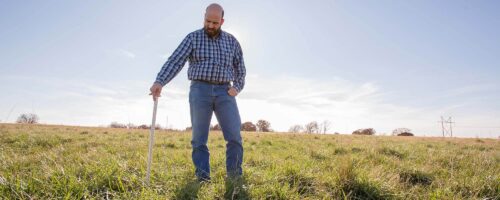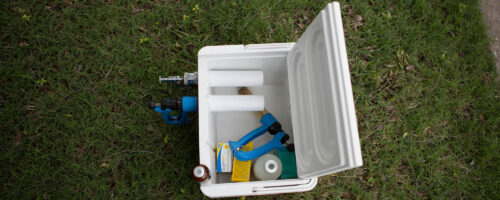Wetlands come in many different forms. They can be tidal zones, marshes, bogs or swamps among many other types. However, they all share characteristics that make them wetlands. They are areas where water is present above or near the surface of the soil for at least a portion of the year, and the soil and vegetation present is determined by the presence of water. Some wetlands need to be dry for part of the year to maintain their hydrologic cycle. Wetlands provide several ecosystem services such as reducing erosion, recharging aquifers and providing habitat for several wildlife species.
Unfortunately, in the past few hundred years, we have lost more than half of the wetlands in the United States. We currently have about 110 million acres of wetlands, but we continue to lose more every year. Most of the reasons that wetlands were lost are due to humans altering them. Some of the main reasons for altering wetlands were draining for farming and urban development, and channelization for flood control, navigation and urban development.
Wetlands act as a natural sponge. When high rainfall events occur, surface water must go somewhere. Wetlands catch and slow down the flow of surface water then slowly release the water, which significantly reduces the amount of flooding downstream. Since the water is slowed down, there is time for it to recharge ground water and improve water quality because sediments fall out of the water column and nutrients are taken up by aquatic plants. Wetlands also act as bioremediation sites because they have the ability to remove pollutants from surface water. They are so good at this they are sometimes used to treat wastewater.
Wetlands provide excellent habitat for many fish and wildlife species. Several fish species use wetlands to breed and raise young. Wetlands provide cover, food and water for several wildlife species such as muskrat, red-eared slider and bullfrog, as well as nesting, breeding and feeding for several avian wildlife species such as waterfowl, blackbirds and cranes. Wetlands tend to have higher plant diversity than the surrounding area, which is good for most wildlife species. In parts of the Great Plains, wetlands act as an oasis due to the increased plant and animal life around them.
Due to the critical ecological services that wetlands provide, it is important to maintain existing wetlands. There are landowners and conservation groups that are protecting and creating wetlands in critical areas to benefit certain wildlife species. For instance, wetlands in the prairie pothole region in the northern Plains have been a focus because it is a nesting area for ducks. Wetland conservation has played a major role in increased duck numbers. Maintaining and creating wetlands can also have impacts locally. Nonmigratory and migratory animals benefit, and water quality is improved. The economic benefits to wetlands are numerous as well. Improved water quality, flood control, wildlife and fisheries habitat, and recreational opportunities are just a few economic benefits that wetlands provide.
Wetlands are an important, yet often overlooked, resource. Keeping them healthy is critical to maintain clean water and to support wildlife and fish populations.



Comment